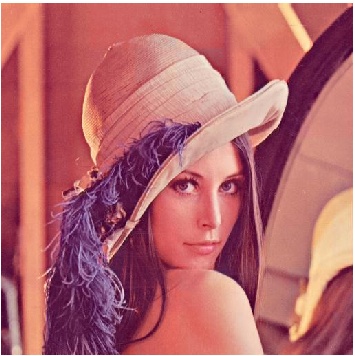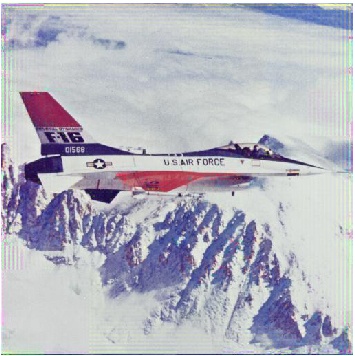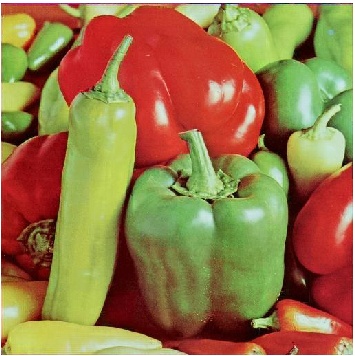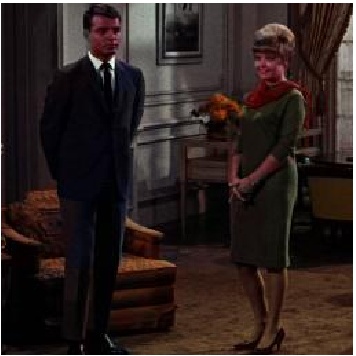New PCA-based Compression Method for Natural Color Images
New PCA-based Compression Method for Natural Color Images
New PCA-based Compression Method for Natural Color Images
A. Abadpour
,
S. Kasaei
Mathematics Science School, Sharif University of Technology
Computer Engineering School, Sharif University of Technology
Abstract
The color information in a natural image can be considered as a
highly correlated vector space. This high correlation is the first
motivation towards using linear dimensionality reduction methods
like principal component analysis for the sake of data
compression. In this paper new color image decomposition methods
are proposed and compared experimentally. Using a newly proposed
gray-scale image colorizing method, a new compression method is
proposed for natural color images, that while reducing the
spectral redundancy of natural color images, it leaves the spatial
redundancy unchanged, to be handled with a specialized
spatial-compression method independently, and is proved to be
highly efficient.
Principle Component Analysis Color Image ProcessingQuad-tree DecompositionColor Image Compression.
1 Introduction
Color is the way the human visual system (HVS) perceives a
part of the electromagnetic spectrum approximately between 380nm
and 780nm. A color space is a method to code a wave in
this range.
Although, due to practical reasons, the Red-Green-Blue
(RGB) color space is widely used, when dealing with natural
images it suffers from the high correlation between its
components [1]. Furthermore, the RGB color space has
proved to be psychologically not intuitive [2] and
perceptually non-uniform [2,3]. Different color
spaces are proposed in the literature [4] but there are
only a few color space comparison articles available. A recent
work [5] considers the effects of color space selection on
the skin detection performance, reporting that non of the eight
color spaces of normalized RGB (NRGB), CIE-XYZ,
CIE-La*b*, HSI, spherical coordinate transform (SCT),
YCbCr, YIQ, and YUV respond better. Another paper [6]
investigates five color spaces including RGB, YIQ,
CIE-L*A*B*, HSV, and Opponent color and experimentally
compares them in terms of human ability to produce a given color
by changing the coordinates in a given color space. A new
paper [7] compares the eleven color spaces of YCbCr,
NTSC, PAL, HDTV, UVW, CIE-XYZ, DCT, DHT, K1K2K3 and KLT and
the original reversible color transform (ORCT) in terms of
image coding. In this paper "the primary objective is to
find a linear color transform that maps integers to integers and
reversible, yield good objective image quality in the case of
lossy compression". In [8], the authors compared the
twelve standard color spaces of RGB, CMYK, HSI, I1I2I3,
CIE-La*b*, CIE-L*HoC*, CIE-Lu*v*, CIE-XYZ,
YCbCr, YIQ, and YUV, according to results of spotting
colors, in a simple image containing eight different objects with
different colors. Also, taking advantages of principle component
analysis, a new adaptive color space called PCA-PLAC is proposed
which performs the job more accurate and more stable compared to
the standard color spaces under investigation [8].
Although many modern imaging systems are still producing
gray-scale images, color-images are more preferred due to the
larger amount of information contained by them. Computing the
gray-scale representation of a color image is a trivial task, but
when dealing with the inverse problem, the task shows itself as a
more complicated job; that should be performed with some levels of
human intervention. Authors have performed a widespread search in
the literature containing personal contact to the authors of the
very few papers found in the field. Rather than the classic
pseudocoloring task proposed by
Gonzalez [9], The only noteworthy works are
published by Welsh [10], Yan [11],
and a newly proposed PCA-based gray-scale image colorizing
method [8]. The methods are compared both subjectively
and quantitatively [8] and the new method is proved to be
dominant.
Quad-tree decomposition is a method for splitting an image
into homogenous sub-blocks [12]. Defining the whole image
as a single block, the method is performed according to some
problem-specific homogeneity criteria. Each block is
examined to check wether it is homogenous or not. If it is not,
then it will be split into four same-sized blocks. The method
terminates when there is no other blocks to be split or when all
blocks to be split are smaller than a pre-selected size. The
minimum size of the blocks is set, to avoid over
segmentation. Work on generalization of quad-tree decomposition
has been performed, both on dimension [13] and
shape [14] of the blocks. Using rectangular blocks is
known to have many benefits. Firstly, performing block-wise
operations in rectangular regions is computationally inexpensive.
In addition, more complicated blocks, as triangles, perform
division operator on spatial variables which leads to more
round-off and misalignment errors. When using the
simple one-split-to-four rule, the number of blocks
desperately increases by factor of four. Having in mind that
increasing number of blocks declines the performance of
post-processes like recomposition and compression, the need for a
better splitting method arises.
The idea of reducing the color space dimension is not a new idea;
many researchers have reported benefits of illumination coordinate
rejection [5,1]. The principle component
analysis (PCA) [15,16,17] is widely used in
signal processing, statistics, and neural networks. In some areas,
it is called the (discrete) Karhunen-Leove transform (in
continuous case) or the Hotelling transform (in discrete
case). The basic idea behind the the PCA is to find the
components {s1 ¼sn}, so that they determine the
maximum amount of variance possible by n linearly transformed
components (si=wiTx). In practice, the computation of wi
can be simply accomplished using covariance matrix C = E{ (x-[`x]) (x- [`x])T }. , where wn is the eigenvector of
C corresponding to the nth largest eigenvalue [15].
The basic goal in PCA is to reduce the data dimension. Thus, one
usually chooses n << m. Indeed, it can be proven that the
representation given by PCA is an optimal linear dimension
reduction technique in the mean-square sense. Such a reduction in
dimension has important benefits. First, the computational cost of
the subsequent processing stage is reduced. Second, noise can be
reduced; as the data not contained in the n first components may
be mostly due to noise [15]. Using PCA for color image
processing is not a new idea. A recent work [18] proposes
a new approximation for PCA and a new set of methods for
performing color image processing primitives of edge-detection,
sharpening and compression. Although due to the computation cost
of principle components, an accurate fast approximation seems
useful, but according to the probabilistic characteristic of data,
precautions must be made to avoid noise sensitivity of the
approximation. The paper [18] proposes to use the
"color vector of the central pixel of the window before
constructing the corresponding covariance matrix" for the
purpose of "computation efficiency" in contrast with our
proposal of using the average of the window. Using such
deterministic noise-dependant values in the spatial map must be
avoided. Also in the proposed approximation, the direction of the
first principle component is selected as the vector starting at
mean, ending at the furthest point of the data cloud. Having in
mind the scattered pattern of the color vectors in a natural
image, even containing some completely irrelevant points, it is
clear that the proposed method [18] is noise-dependent to
great extends.
In this paper the three notations éxù, ëxû, and /x/ are used as the smallest integer larger than
x, the largest integer smaller than x, and the nearest integer
to x, respectively.
2 Proposed Methods
2.1 Quad-tree Decomposition of Color Images
We propose thresholds [e\tilde]R [8] as a region
homogeneity criteria:
where e1 is a user-selected parameter, mostly in the
range [1... 10]. The minimum size of blocks for a W×H
image is set to dx×dy, where:
Tree depth (r) is either asked from the user or computed
as:
During the decomposition stage, all the information is saved as a
13×N matrix called L, where N is the number of
the blocks and each row of L consists of x1, y1,
x2, y2, h1, h2, h3, v1, v2,
v3, [e\tilde]R, and two reserved parameters.
The number of blocks must be considered thoughtfully. If we define
Nn as the number of blocks after n passes of splitting, it is
clear that for fully scattered images, while setting
e1=0 the algorithm will give Nn=4n-1.
According to the inflated number of blocks produces in ordinary
quad-tree decomposition method, two new bi-tree
decomposition methods are proposed. Rather than the
one-to-four rule in quad-tree decomposition, here any
non-homogenous block is split into two blocks. Assuming that the
block R is not enough homogenous, In the first method called
bi11-tree decomposition, two sets of alternatives for
decomposition are proposed (see Figure 1). If [e\tilde]R1+[e\tilde]\acute R1 < [e\tilde]R2+[e\tilde]\acuteR2 the block is split vertically and it is split horizontally
otherwise. In the second proposed method, called
bi12-tree decomposition, four sets of alternatives are
investigated (see Figure 2). The method corresponding to
the minimum of { [e\tilde]R1+[e\tilde]\acute R1, [e\tilde]R2+[e\tilde]\acute R2, [e\tilde]R3+[e\tilde]\acuteR3, [e\tilde]R4+[e\tilde]\acute R4} is the winner. In
the two new proposed methods, the rectangular clipping is reserved
while the block shape changes to best fit the image. Experimental
results are discussed in Section 3.1.
0.5cm
Picture Omitted
Figure 1: Proposed bi11-tree.
0.5cm
Picture Omitted
Figure 2: Proposed bi12-tree.
2.2 Color Image Compression
Based on the proposed image decomposition method (See Section
2.1), a new compression method for color images of
natural scenes is proposed; As a sub-sampling stage
presents in the process, the image is firstly filtered using an
ideal low-pass filter to avoid further aliasing:
|
H1(z1,z2)= |
ì
ï
í
ï
î
|
|
1,|z1| < |
1
2dx
|
,|z2| < |
1
2dy
|
|
|
|
| |
| (5) |
where dx and dy are defined in (2). Let's call the
filtered version of the original image I, as [I\tilde].
One of the decomposition methods proposed in Section
2.1 are performed on [I\tilde], resulting in the
13×N matrix L. It is clear that L can be
compressed, to be stored in 12N bytes, each row contains {x1,y1, /log2[W/(x2)]/, /log2[Y/(y2)]/}È{h1, h2, h3, v1, v2, v3}, which are all stored as
0... 255 variables, rather than x1, y1 that are stored
as 0... 65535 variables. Assuming that we are working on a
W×H color image, the size of the file is 3WH bytes. We
propose computing the gray-scale version of the image (contains
WH bytes of data), and replacing the least significant
bit (LSB) of all bytes with the information in L. It is
clear that, the user does not perceive the diversified bit. The
image now contains 7/8WH+11N bytes of data. If the image
is not too scattered the compression ratio will be about 3. To
say more precisely, the compression ratio is less than [24/7] @ 3.428, depending on the image complexity.
Now we propose the reconstruction method to compute the
uncompressed version of data in color representation. A very
simple reconstruction method is using [(h)\vec] and [v\vec]
values of any block to colorize its contents [8]. Here we
propose a better method that has shown better quantitative and
subjective results. We call the simple method as the zero
method while the next method is called the plus method.
Assuming the two 3×W ×H matrices E and V, and
the W ×H matrix C, we set all elements in E, V, and
C to zero. Scanning L, that we have extracted from the
compressed data row by row, we fill the matrices in this way: When
processing the block (x1,y1)-(x2,y2) with the two describing
vectors [(h)\vec]=[
| ]T and [v\vec]=[ |
| ]T, for any x Î [x1... x2] and
y Î [y1... y2] that dx|x and dy|y and for all i Î {1,2,3}, we set E[i,wdx(x),wdy(y)] = hi
and V[i,wdx(x),wdy(y)]=vi. Also we set
C[wdx(x),wdy(y)]=1. Where wdx(x)
defined as:
is used to align the points in a dx×dy grid. Due to
occurrence of round-off, some samples of E and V align
the dx×dy grid are lost. C is used to compensate this
information-loss. When setting an element of E, say E(i,x,y),
the set defined as:
|
{(u,v)||u-x| £ dx, |v-y| £ dy } |
| (7) |
is searched for zero values of C align the dx×dy grid.
If such points are found, the values of E(i,x,y) and V(i,x,y)
are copied into appropriate cells of E and V respectively. Now
E and V, contain samples of the signals [E\tilde] and [V\tilde] sampled by a cartesian grid (dx×dy). Reconstruction
of [E\tilde] and [V\tilde] is easily performed using the ideal
low-pass filter defined as:
|
H2(z1,z2)= |
ì
ï
í
ï
î
|
|
dxdy,|z1| < |
1
2dx
|
,|z2| < |
1
2dy
|
|
|
|
| |
| (8) |
Using G (the contents of the 7 most significant bits
(MSB) of the compressed image) as the source image and [E\tilde], [V\tilde] as the color content, by applying either of the two
colorizing methods proposed in [8], the color information
is reproduced simply. It is clear that the proposed compression
method is independent of the method that has produced L,
either be quad-tree decomposition or bi-tree decomposition.
Experimental results are shown in Section 3.2.
3 Performance Evaluation
All algorithms are developed in MATLAB 6.5, on an
1100 MHz Pentium III personal computer with 256MB
of RAM. The code for all algorithms is available online at
http://math. sharif. edu/ ~ abadpour/code.html.
3.1 Quad-tree Decomposition of Color Images
To compare the results of the three proposed decomposition
methods, six standard images of Peppers, Couple,
Girl, Lena, Airplane, and Mandrill are
decomposed by setting e1=1¼10 for each method
(30 decompositions per image). In all tests when the value of
r is not restricted, it is computed as described
in (4). Figure 3 shows results of the proposed
decomposition methods on three standard images of Lena,
Airplane, and Peppers (As three ordinary, simple,
and complex samples respectively). The values of e1,
t, N, and r are denoted in the caption of
Figure 3 for each sample along with the method used to
decompose the image. In order to compare number of blocks made in
the three proposed methods in each iteration of the algorithm, the
standard image Lena is decomposed by setting
e1=2. Results are shown in Figure 4. Also
the same image is decomposed with different values of
e1 in the range of [1¼10]. The results are
shown in Figure 5-a. Required time to decompose the
standard image Mandrill with different values of
e1 in the range of [1¼10] are shown in
Figure 5-b.
 | 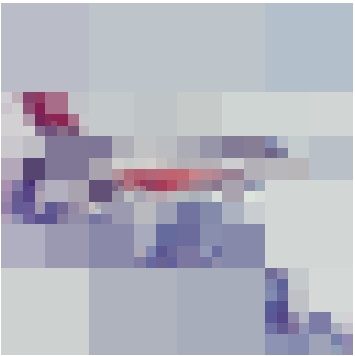 |  |
| (a) | (b) | (c) |
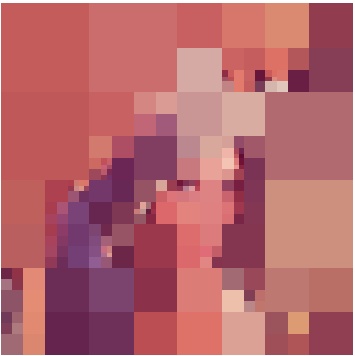 | 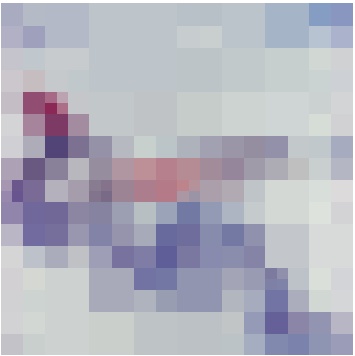 | 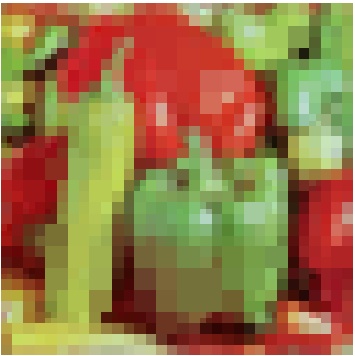 |
| (d) | (e) | (f) |
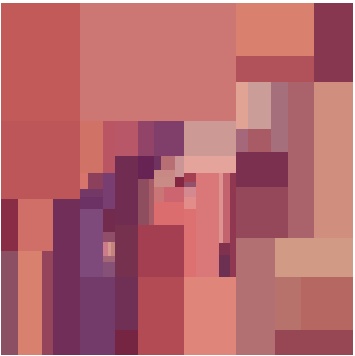 | 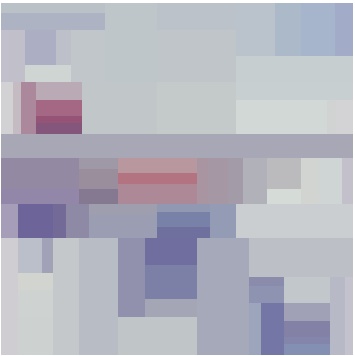 | 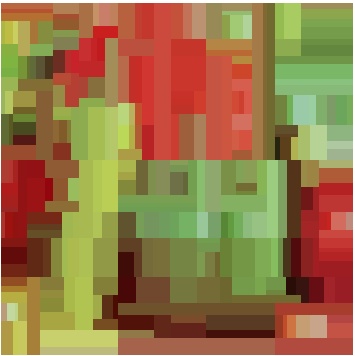 |
| (g) | (h) | (i) |
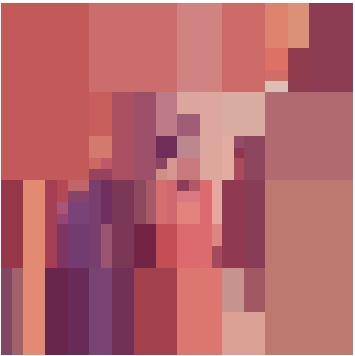 | 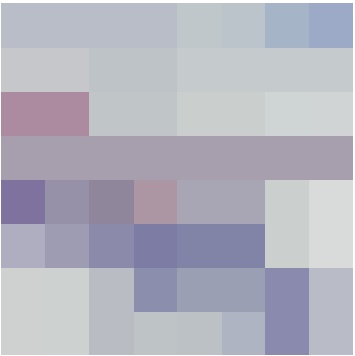 | 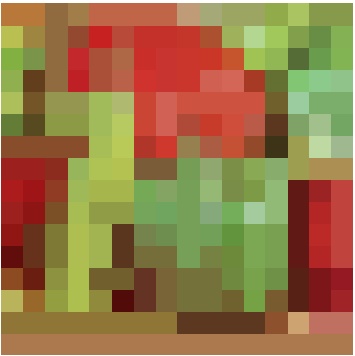 |
| (j) | (k) | (l) |
Figure 3: Results of the proposed decomposition methods on
Lena, Airplane, and
Peppers. (a)-(f): quad-tree decomposition, (g)-(i):bi12-tree decomposition, and (j)-(l): bi11-tree decompositionParameters: [e1, t, N, r], (a) [3, 5s, 295, 6]
(b) [2, 5s, 214, 6] (c) [5, 7s, 1462, 8] (d) [5, 5s, 205, 7] (e)
[1, 5s, 193, 5] (f) [2, 7s, 1054, 6] (g) [5, 18s, 77, 7] (h) [1,
20s, 86, 5](i) [2, 24s, 324, 6] (j) [5, 10s, 79,
7] (k) [1, 10s, 36, 5] (l) [2, 1s, 172, 6]
Figure 4: Block count growth in three proposed decomposition
methods performed on standard image Lena.
 | 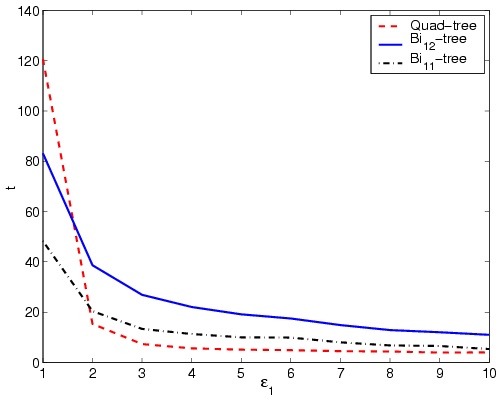 |
| (a) | (b) |
Figure 5: Results of the proposed decomposition methods for
different values of e1 performed on standard image
Lena. (a) Block count, (b) elapsed time
Comparing the curves in Figure 4 shows that the proposed
quad-tree decomposition method converges in much lower number of
iterations compared with the proposed bi11-tree and
bi12-tree decomposition methods, Whilst bi12-tree has
the most convergence time. In addition comparing the final values
shows that final number of blocks in the two bi-tree methods are
almost the same, while with the same e1, quad-tree
has produced twice number of blocks. Considering the number of
blocks (Which rules the performance of the method processing the
blocks, like recomposition or compression), it is clear that
bi-tree methods are better than the quad-tree method. Figure
5-a shows that the number of blocks when treated in
logarithmic scale, relates almost linearly to the value of
e1. The decline in the number of blocks in higher
values of e1 for quad-tree and bi11-tree are
also thoughtful. While for compression purposes, one selects lower
values of e1, higher values are appropriate for
compression usages. Figure 5-a shows that bi11-tree
is a better choice for segmentation compared to quad-tree and
bi12-tree methods.
As expected, quad-tree decomposition is averagely faster than the
bi-tree methods (see Figure 5-b). This is not strange
when considering the excessive computation of alternative blocks
in bi-tree methods. While bi11-tree performs four homogeneity
computations, bi12-tree performs eight ones, describing the
lower speed of bi12-tree compared to bi11-tree. The
sudden increase of elapsed time in quad-tree decomposition for
values of e1 < 2 happens in all samples. As low values
of e1 are better responding to compression, it is
clear the bi11 is an appropriate choice for compression.
The above discussion leads to two promising results. Firstly
bi11-tree decomposition over-performs the two other methods
in compression and recomposition usages, both in terms of elapsed
time and number of blocks. Secondly, it is clear that the more
complicated bi12-tree decomposition not only is not
responding better than bi11 but also has less performance.
the motivation towards bi12-tree decomposition is to define a
new structure that inherits the brilliant one-to-two
splitting characteristic of bi11-trees along with more
adaptivity. The results show that with less time efficiency,
bi12-tree is not responding meaningfully better than
bi11-tree. This desperate result avoids us to define new
definitions of bi-tree decomposition with more complicated
alternatives.
3.2 Color Image Compression
To compare the results of the proposed compression method, 6
standard images of Peppers, Couple, Girl,
Lena, Airplane, and Mandrill are compressed
by setting e1=1¼10 for each of the three
proposed decomposition methods (30 compressions per image). In
all tests r is computed as described in (4).
Figure 6 shows nominal results of the standard images.
The PSNR and l values are denoted in the caption. For
different values of e1 Î [0¼10], Figure
7-a shows values of the PSNR0 and the PSNR+ for
the standard image Lena and Figure 7-b shows the
respective compression ratio results.
Figure 6: Results of the proposed compression method. (a)
Lena: PSNR=35, l = 3.13 (b)
Mandrill:PSNR=31, l = 1.79 (c) Girl:
PSNR=35, l = 2.86 (d) Airplane:PSNR=35,
l = 3.13 (e) Peppers:PSNR=31, l = 2.50 (f)
Couple:PSNR=36, l = 3.13
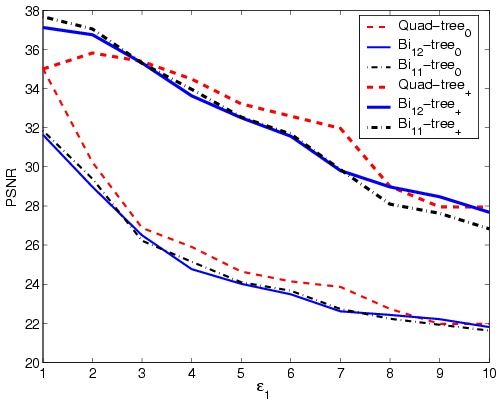 | 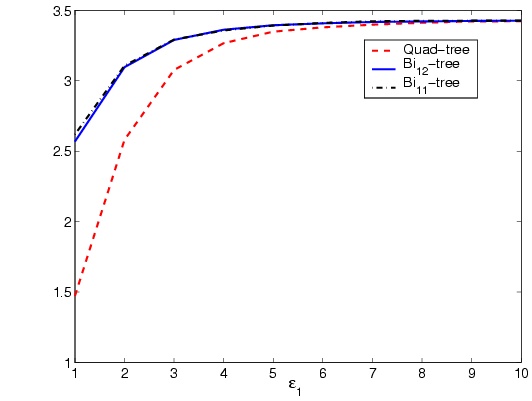 |
| (a) | (b) |
Figure 7: Results of the proposed compression method on standard
image Lena for different values of e1.
(a)PSNR0 and PSNR+, (b) Compression ratio
The sample images of Figure 6 are subjectively desiring.
Authors have performed a very simple but efficient test. Among the
31 people participating in a subjective test, no one was able to
distinguish between the compressed images and the original ones.
Even the authors were many times in doubt, wether they are
watching the original image or the compressed one.
l values must be considered precisely. As the proposed
compression method works on spectral redundancy, the
marginal value of l is 3. Having in mind that almost no
spatial redundancy decreasing have performed in this
method, it is clear that any gray-scale image compression method
can be serialized with our proposed method, to compress the 7-bit,
G matrix. The point is the definitely independence of the
spatial and spectral compression methods.
As it is clear in Figure 7-a, bi11-tree
over-performs the bi12-tree in terms of PSNR. This result
complies with the discussions in Section 3.1.
Although quad-tree has given better PSNR values compared with
bi-tree methods for higher values of e1, considering
that the high compression ratios are gained in lower values of
e1, where bi11-tree is the dominant method,
proves that bi11-tree is the best selection for compression.
A noticeable fact in Figure 7-a is the same value of the
PSNR for quad-tree in e1=1. As with decreasing values
of e1, quad-tree decomposition process converges to
the ordinary uniform sampling, the proposed compression method
reduces to a simple sub-sampling of color information. the more
than 2 steps difference between values of the PSNR of quad-tree
and bi11-tree at e1=1 shows the over-performance
of the proposed bi11-tree decomposition. The higher than 3
values of compression ratio with the PSNR value of more than 35
qualifies the performance of our proposed compression method.
4 Conclusion
Quad-tree decomposition of gray-scale images is not a new method,
but in this paper a new method for decomposition of color images
is proposed based on a previously proposed region homogeneity
criteria [8]. Although a few other decomposition methods
are proposed in the literature [14], by they lack the
simplicity of quad-trees. Here, two new bi-tree decomposition
methods are proposed that reduce the number of blocks considerably
while using rectangular blocks, resulting in algorithm simplicity.
A new color image compression method is proposed that leaves the
spatial redundancy almost unchanged while reducing the spectral
redundancy almost entirely. The method which is based on the
proposed decomposition methods, compresses color images with the
factor of three while giving high values of PSNR. Having in mind
that the theoretical value for an spectral-based compression
method is three, the brilliancy of our proposed compression method
is clear.
Acknowledgement
The first author wishes to thank Mrs. Azadeh Yadollahi for her
encouragement and invaluable ideas.
References
- [1]
-
P. H., Representation of color images in different color spaces, in:
S. Sangwine, R. Horne (Eds.), The color image processing handbook, Chapman
and hall, London, 1998, pp. 67-90.
- [2]
-
CIE, CIE. International Lighting Vocabulary, CIE Publications, 4th edition,
1989.
- [3]
-
I. Tastl, G. Raidl, Transforming an analytically defined color space to match
psychophysically gained color distances, in: the SPIE's 10th Int. Symposium
on Electronic Imaging: Science and Technology, Vol. 3300, San Jose, CA,
January 1998, pp. 98-106.
- [4]
-
K. N. Plataniotis, A. N. Venetsanopoulos, Color Image Processing and
Applications, Springer-Verlag, Heidelberg-New York, 2000.
- [5]
-
L. V. T. Min C. Shin, Kyong I. Chang, Does color space transformation make any
difference on skin detection?, http://citeseer.nj.nec.com/542214.html.
- [6]
-
W. B. C. Micheal W. Schwarz, J. C. Beaty, An experimental comparison of rgb,
yiq, lab, hsv and opponent color models, ACM Transaction on Graphics 6 No. 2
(April 1987) 123-158.
- [7]
-
P. Hao, Q. Shi, Comparative study of colortransforms for image coding and
derivation of integer reversible color transform, 2000, pp. 224-227.
- [8]
-
A. Abadpour, S. Kasaei, New principle component analysis based methods for
color image processing, Submitted to Visual Communication and Image
Representation Journal.
- [9]
-
G. R.C., W. P., Digital Image Processing, Addison-Wesley Publications, Reading,
MA., 1987.
- [10]
-
M. A. Tomihisa Welsh, K. Mueller, Transferring color to grayscale images, in:
ACM SIGGRAPH 2002, San Antonio, July 2002, pp. 277-280.
- [11]
-
M. S. K. Wei-Qi Yan, Colorizing infrared home videos, ICME 2003 1 (2003)
97-100.
- [12]
-
H. Samet, Region representation: Quadtrees from boundary codes, Comm. ACM 21
(March 1980) 163:170.
- [13]
-
H. J. Christos Faloutsos, Y. Manolopoulos, Analysis of the n-dimensional
quadtree decomposition for arbitrary hyperrectangles, IEEE Transaction on
Knowledge and Data Engineering 9, No. 3 (May/June 1997) 373-383.
- [14]
-
M. Yazdi, A. Zaccarin, Interframe coding using deformable triangles of variable
size, 1997, pp. 456-459.
- [15]
-
A. Hyvarinen, Independent component analysis: Algorithms and applications, IEEE
transaction on Neural Networks.
- [16]
-
I. T. Jolliffe, Principal Component Anslysis, Springer-Verlag, Heidelberg-New
York, 1986.
- [17]
-
M. Kendall, Multivariate Analysis, Charlas Griffin and Co., 1975.
- [18]
-
S.-C. Cheng, S.-C. Hsia, Fast algorithm,s for color image processing by
principal component analysis, Jurnal of Visual Communication and Image
Representation 14 (2003) 184-203.
File translated from
TEX
by
TTH,
version 3.72.
On 01 Aug 2006, 13:34.
| 














